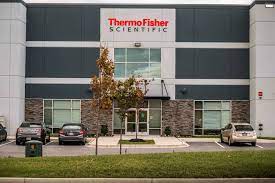Thermo Fisher (NYSE:TMO), a manufacturer of laboratory equipment and diagnostic tools for the life sciences and biotechnology industries, is displaying impressive relative strength after providing upside FY22 guidance during its Investor Day presentation. Specifically, the company is forecasting EPS of $21.16 vs. the $19.58 consensus estimate and long-term core organic revenue growth of 7-9%. In addition to the bullish outlook, TMO also offered a positive update on its pending $17.4 bln acquisition of PPD, a leading clinical research organization (CRO).
A key catalyst for the company has been its response to the COVID-19 pandemic. Through its Life Sciences Solutions segment, the company provides PCR (polymerase chain reaction) testing equipment and kits that are used to diagnosis virus infections. Since the onset of the pandemic, TMO has supported over 650 mln COVID-19 tests. Financially-speaking, this has translated into $6.6 bln in revenue in 2020, with the company anticipating $6.7 bln in COVID-related revenue this year.
While TMO’s role in COVID-19 testing is the most obvious growth driver, the company is benefiting from other tailwinds as well.
For instance, scientific breakthroughs are leading to a burst of clinical trial activity in the pharmaceutical and biotech arenas. According to TMO, there are currently over 18,000 drug candidates in the pipeline, funded by $22 bln in global venture capital. This surge in activity puts TMO’s products, such as molecular reagents, lab chemicals, and analytical equipment, in the sweet spot. Its immense scale and strong supply chain capabilities are enabling the company to capitalize on the very favorable environment.
M&A is another major component of TMO’s growth strategy. On a related note, the company stated that it remains on track to close the PPD acquisition by the end of this year. Additionally, the company reiterated its expectation for the acquisition to be immediately and significantly accretive to adjusted EPS over the first twelve months following the closing.
Regulatory hurdles still remain, but it would be surprising if the deal didn’t receive approval given that TMO’s existing presence in the CRO market is minimal. Beyond the PPD acquisition, the company intends to continue its M&A activities going forward. Over time, its strategy is to deploy 60-75% of capital towards M&A initiatives, with 25-40% earmarked for share buybacks and dividends.
To conclude, TMO is more than just a COVID-19 story, although that catalyst is likely to be enduring. With the PPD acquisition progressing towards completion, and with clinical research activity continuing to ramp up, TMO looks poised for healthy growth in the years ahead.





